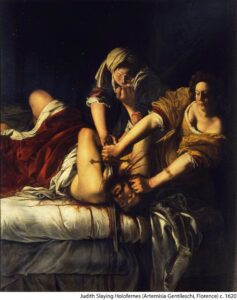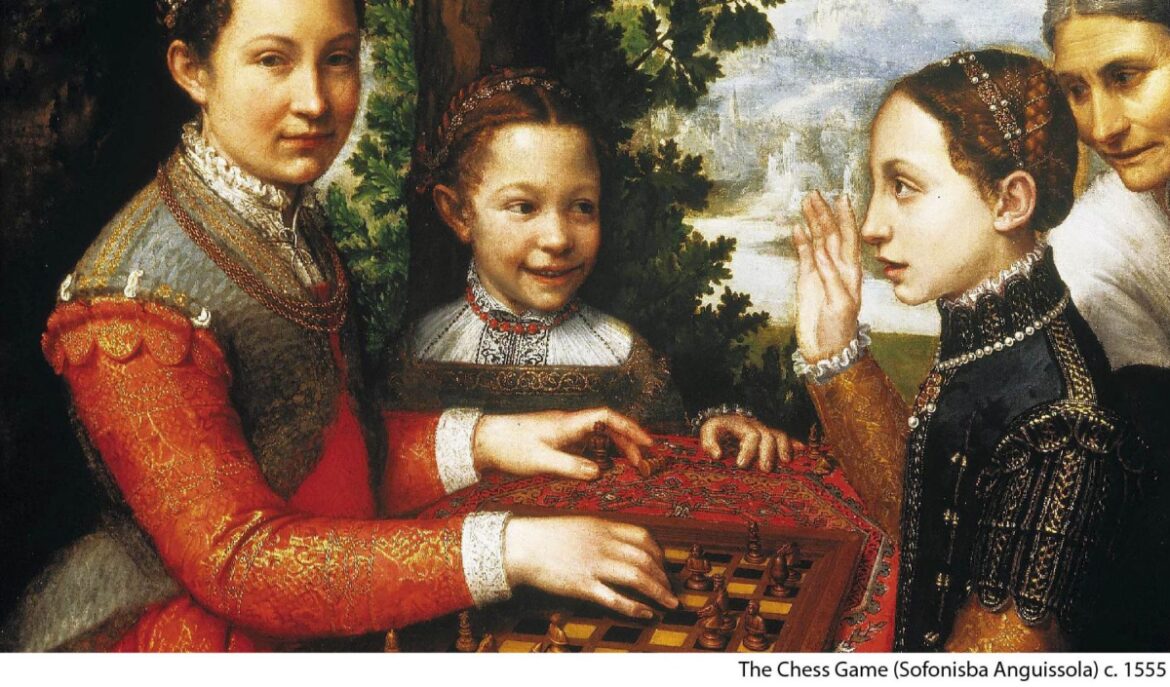In anticipation of Boston’s Museum of Fine Art’s Strong Women in Renaissance Italy, three inspiring female Renaissance artists will be on display and especially deserve your attention. While female artists during the Renaissance were not unheard of, these artists broke barriers and took command of how women were portrayed in paintings. Often overlooked, these women influenced style and subject matter in Renaissance painting just as much as household names like Michelangelo and Da Vinci.
Described by the Metropolitan Museum of Art as a time of “artistic, humanistic, technological, and scientific flowering,” the Renaissance was a rebirth of classical ideologies discovered in ancient texts and artifacts. A new interest formed in the individual’s intellectual potential, and great strides were made in all academic pursuits, including mathematics, medicine, architecture, and the visual arts.
This new era of “humanist scholarship and artistic production” was headed by familiar names such as Michelangelo, Raphael, and Da Vinci, all great innovators and influential figures in future art. However, few of us can conjure up a female figure when we think of Renaissance painters. This is not because they did not exist, but because they are often overshadowed by history books and exclusive exhibits.
Fortunately, new space is being made in the art world to give voices to the female artists who were forgotten and finally showcase their work, which frequently holds the same mastery and beauty as their male counterparts, on a broader stage.
The Museum of Fine Arts in Boston will open Strong Women in Renaissance Italy on Sept. 9, and it will run until Jan. 7, 2024, with over 100 works by, for, or about women dating from the 14th century to the 17th century. The exhibition’s objective is to explore “the lives and experiences of women in Renaissance Italy and offer new perspectives on female creativity, power, and agency.”
Before visiting the exhibition, learn more about three cornerstone female artists who helped define the style of Renaissance painting and challenged how women were portrayed in art.
Artemisia Gentileschi (1593-1653)
Artemisia Gentileschi was born in Rome into an artistic family in 1593. Her father, Orazio, was a very successful court painter to King Charles I and trained Artemesia to paint, which was uncommon for women during this time. Artemisia moved to Florence after marrying fellow artist Pierantonio di Vincenzo Stiattesi around 1612. There she had five children and established herself as an artist, experienced the prolific work of Caravaggio, and created her best-known works.
 Gentileschi is known for painting images of strong women in Biblical and allegorical scenes, often dominating men. One of her best-known works, Judith Slaying Holofernes (1612-13), recounts the Biblical story of a Jewish woman, Judith, beheading the drunken Assyrian general who was about to capture her people, thus freeing the people of Israel and becoming a Biblical heroine. Using Caravaggio-esque lighting (chiaroscuro), Gentileschi highlighted the passion on Judith’s face and the flexing of her muscles as she plunged her sword into the Holofernes, underscoring her strength and bravery.
Gentileschi is known for painting images of strong women in Biblical and allegorical scenes, often dominating men. One of her best-known works, Judith Slaying Holofernes (1612-13), recounts the Biblical story of a Jewish woman, Judith, beheading the drunken Assyrian general who was about to capture her people, thus freeing the people of Israel and becoming a Biblical heroine. Using Caravaggio-esque lighting (chiaroscuro), Gentileschi highlighted the passion on Judith’s face and the flexing of her muscles as she plunged her sword into the Holofernes, underscoring her strength and bravery.
Sofonisba Anguissola (1532-1625)
Sofonisba Anguissola was the first female artist of the Renaissance to achieve fame in her lifetime. Born into minor nobility, her father gave her and six other siblings a proper Renaissance education in music, painting, and studying of Greek and Roman writings to ensure an advantageous marriage when they came of age. However, Sofonisba excelled beyond expectation in painting, and her father arranged specialized training for Sofonisba and her sister Elena under Bernardino Campi.
Throughout her artistic career, she corresponded with Michelangelo, who gave her advice on her work and helped develop her skills. Her most recognizable work, The Chess Game (1555), shows an intimate scene of the domestic female world in the Renaissance. Three young girls and an older woman can be seen playing chess outdoors with various expressions on their faces, such as defeat (from the sister losing) to pure laughter from the youngest sister, just happy to be watching. Like this piece, Anguissola’s works were known for their storytelling elements and her ability to portray such personality in her subjects as well as her clever style of portraiture, leading to artists such as Peter Paul Rubens copying her style, thus prolonging her legacy.
Lavinia Fontana (1552-1614)
Born in Bologna to Prospero Fontana, an Italian Mannerist artist, Lavinia Fontana found a love for painting at a young age. She showed great potential as her father helped her hone her skills, and when it came time for marriage, her father brokered a deal that exempted her from having a dowry with the promise that her art would earn plenty once they were married. Lavinia’s new husband, Paolo Zappi, often helped her as a studio assistant, and their marriage resulted in 11 children.
Lavinia was a highly sought-after portrait painter for Bolognese women as she could capture the intricacies of their gowns and jewelry and produce stunning likenesses. Lavinia was also the first woman to produce an altarpiece on commission, and her interpretation of the Immaculate Conception in the Assumption of Ponte Santo in 1584 led to multiple other church commissions with payments equaling those of Caravaggio.

